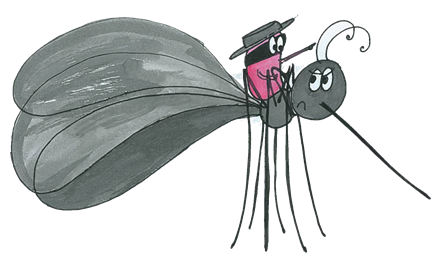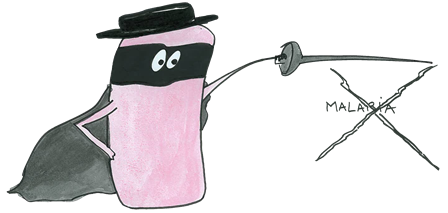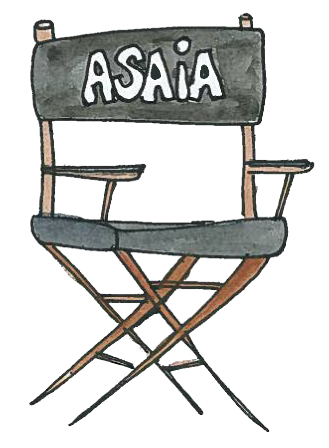Team:EPF Lausanne/Project
From 2010.igem.org
(→Our project idea) |
(→Our project idea) |
||
| Line 21: | Line 21: | ||
==Our project idea== | ==Our project idea== | ||
[[Image:Mousquito and asaia 3.png|left|250px|caption]] | [[Image:Mousquito and asaia 3.png|left|250px|caption]] | ||
| - | The ultimate aim of our project is to | + | The ultimate aim of our project is to contribute to stopping the spread of [https://2010.igem.org/wiki/index.php?title=Team:EPF_Lausanne/Project_malaria Malaria]. To do so, we hope to genetically modify a bacterium that is naturally present in Anopheles. If we succeed, this will interrupt the malaria cycle in the mosquito, thereby also prevent transmission of the parasite to healthy humans. |
| Line 31: | Line 31: | ||
| - | This | + | This bacterium would express an [https://2010.igem.org/Team:EPF_Lausanne/Project_immuno immunotoxin] and specific [https://2010.igem.org/Team:EPF_Lausanne/Project_immuno proteins] to kill the ''P. falciparum'' or prevent its entry into the epithelium. |
[[Image:all_team.png|200px|caption]] [[Image:hunting.png|200px|caption]] | [[Image:all_team.png|200px|caption]] [[Image:hunting.png|200px|caption]] | ||
| - | The immunotoxin and the proteins | + | The immunotoxin and the proteins could be able to stop the infection of Anopheles mosquitoes by ''P. falciparum''. |
| - | Asaia is an organism that is not only easy to grow and genetically manipulate but also | + | Our host bacterium Asaia is an organism that is not only easy to grow and genetically manipulate but also naturally present in the ecosystem. We aim to establish Asaia as a new chassis to give future iGEM teams the opportunity to quickly and efficiently engineer new and more potent Asaia strains in the fight against malaria and other mosquito borne diseases. |
[[Image:Zorro.png|right|300px|caption]] | [[Image:Zorro.png|right|300px|caption]] | ||
| Line 51: | Line 51: | ||
| - | For a playful overview of our project, you can watch our | + | For a playful overview of our project, you can watch our awesome movie |
[https://2010.igem.org/Team:EPF_Lausanne/Humanpractices_Movie iGEM EPFL movie] | [https://2010.igem.org/Team:EPF_Lausanne/Humanpractices_Movie iGEM EPFL movie] | ||
Revision as of 22:43, 26 October 2010


Overview
Our project idea
The ultimate aim of our project is to contribute to stopping the spread of Malaria. To do so, we hope to genetically modify a bacterium that is naturally present in Anopheles. If we succeed, this will interrupt the malaria cycle in the mosquito, thereby also prevent transmission of the parasite to healthy humans.
Our idea is to engineer Asaia, a bacterium that is naturally present in the mosquito's intestinal tract.
This bacterium would express an immunotoxin and specific proteins to kill the P. falciparum or prevent its entry into the epithelium.
The immunotoxin and the proteins could be able to stop the infection of Anopheles mosquitoes by P. falciparum.
Our host bacterium Asaia is an organism that is not only easy to grow and genetically manipulate but also naturally present in the ecosystem. We aim to establish Asaia as a new chassis to give future iGEM teams the opportunity to quickly and efficiently engineer new and more potent Asaia strains in the fight against malaria and other mosquito borne diseases.
So... ASAIA is the pink power against malaria.....
For a playful overview of our project, you can watch our awesome movie
iGEM EPFL movie
Our results
We established Asaia as a new chassis and provided tech-sheets on how to manipulate it. Various biobricks were constructed, with which selected proteins to block malaria infection of mosquitoes can be produced. Also Asaia specific biobricks were made. These basics will allow future iGEM teams to use Asaia and manipulate it to fight mosquito-bourne diseases. The expression of the proteins we intended to use to block Plasmodium falciparum was tested in E.coli. We showed that the immunotoxin is expressed and appears in the supernatant. We could not show expression of the P-proteins. Furthermore we tested the persistance of Asaia in Drosophila to see if we can use it as an alternative host to facilitate research. The results showed that Asaia is not persistant and that the bacterium is very specific to mosquitoes. For the next steps of testing we established a collaboration with the Pasteur institute in Paris that works on mosquitoes.

 "
"























